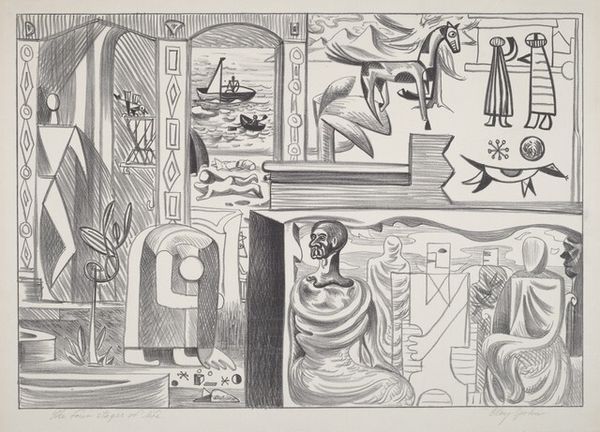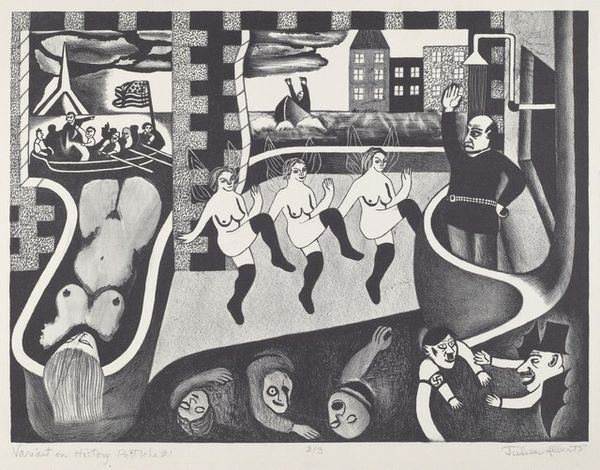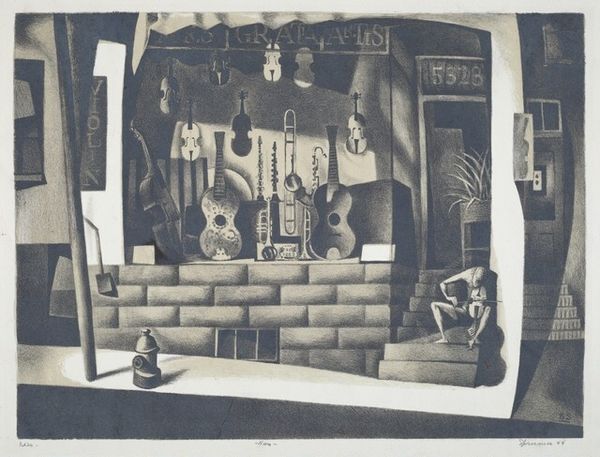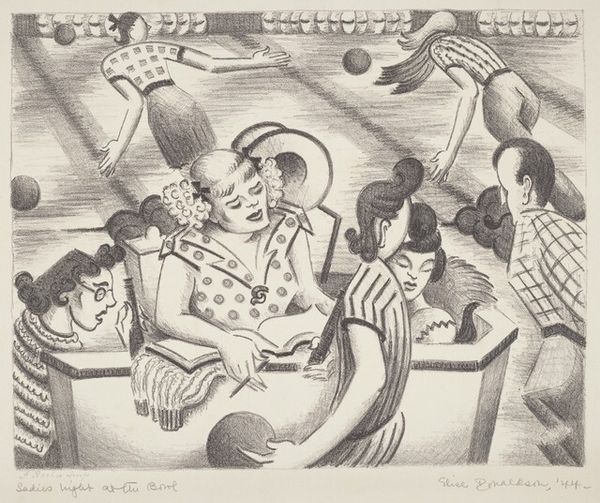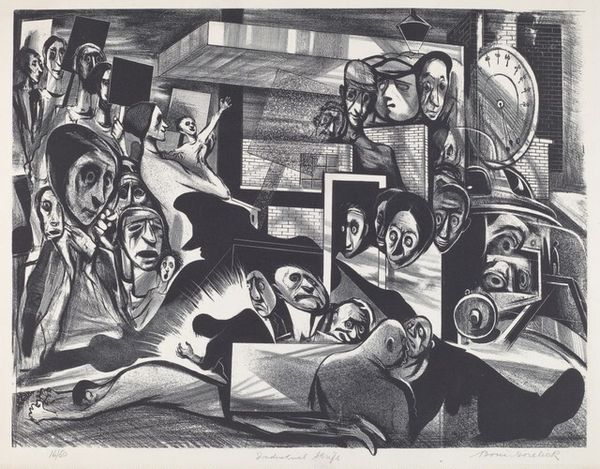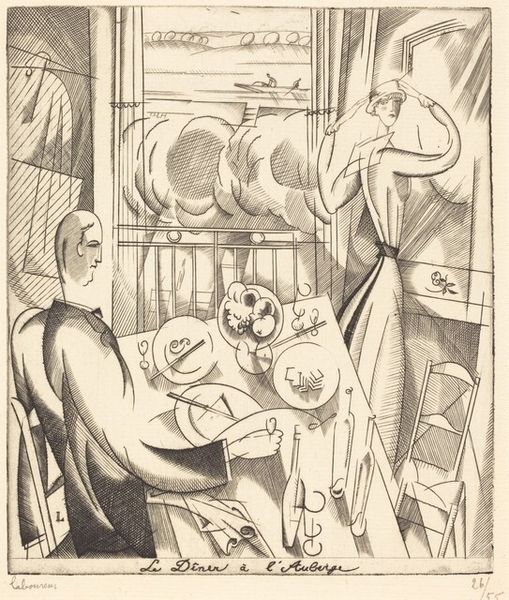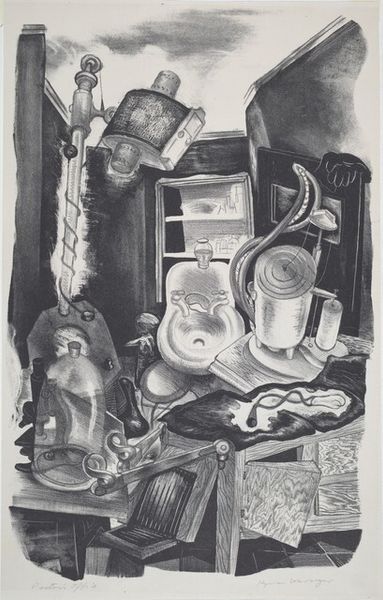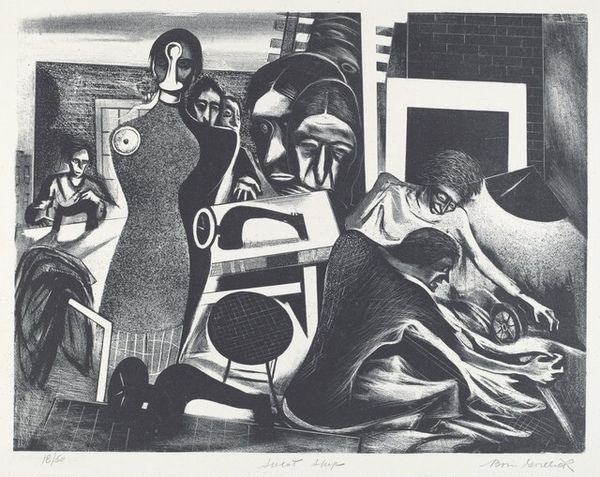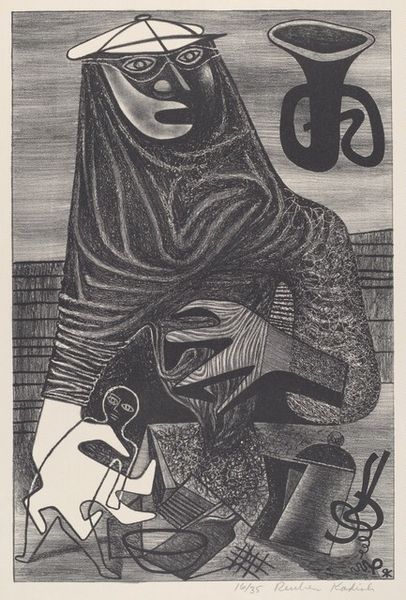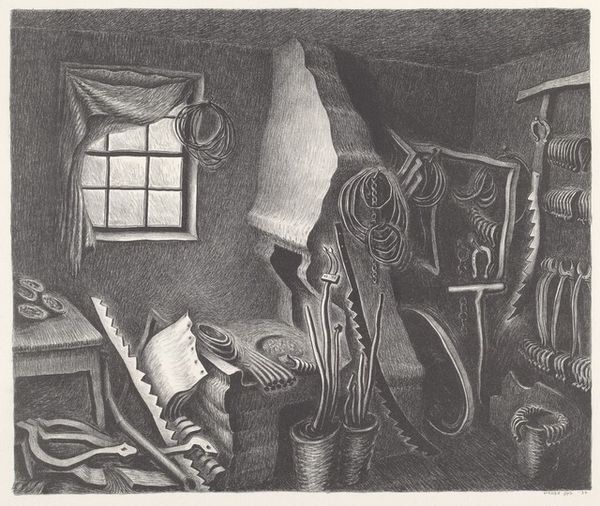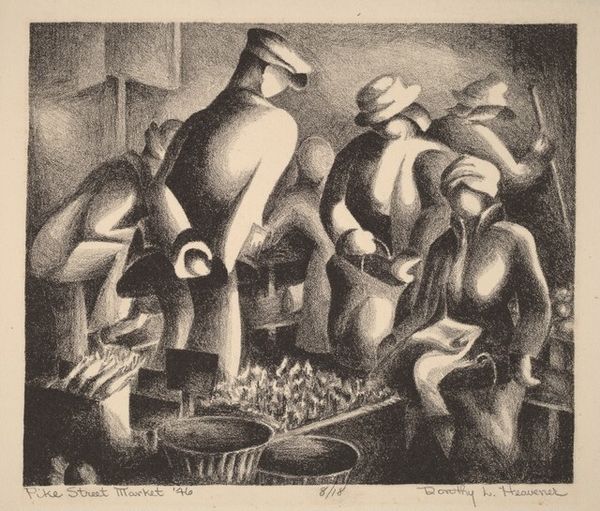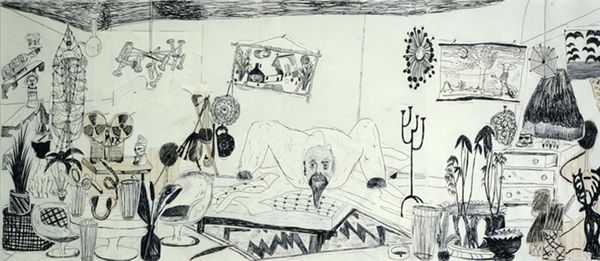
Dimensions: image: 279 x 343 mm sheet: 386 x 470 mm
Copyright: National Gallery of Art: CC0 1.0
Curator: Let's turn our attention to "The House on the Corner," a 1936 print by Julien Alberts. At first glance, what grabs you? Editor: Well, the unsettling juxtaposition of elements. It’s eerie, almost surreal. You've got this seated woman, seemingly absorbed in a book, alongside dangling carcasses and… are those heads peering out of windows? There is a narrative tension that's impossible to ignore. Curator: It's interesting you pick up on that. Considering it’s a print, let's think about the means of production, especially given the social climate of the '30s. Printing allowed for wider distribution, making social commentary accessible to a larger audience. What commentary do you think Alberts might be trying to get across? Editor: To me, this piece resonates with the socio-economic anxieties of the time, likely touching upon the anxieties around race during the interwar period and what some saw as the horror of racial mixing; those unsettling figures observing from the windows, alongside the stark juxtaposition of domesticity and brutality. The house, ostensibly a symbol of refuge, becomes a stage for something far more sinister. What about the formal composition? It appears influenced by a variety of traditions. Curator: Indeed. The hatching technique, the layering of tones to create depth, it's meticulously crafted. You have a contrast between flat, patterned planes and areas of deep shadow, reflecting tensions found in contemporary printmaking of the period. Was Alberts making the most with readily available materials during hard times? Was the work possibly meant as a cheap, widely available counter narrative to the popular imagery and representations that proliferated across other, "more-official" publications of the era? Editor: Those suspended animal corpses evoke not just physical death, but also potentially symbolic loss, the death of a shared culture or of moral certainties. Placing a woman at the fore may offer a visual challenge, potentially highlighting her marginalization in the current society and perhaps a suggestion of resilience amidst a deeply fraught situation. Curator: I appreciate you pointing that out. From a materialist perspective, it would be easy to see her passivity and dismiss it, but situating the piece as a product that can be circulated to promote discourse in such tense times, really makes you reconsider your initial interpretation of her stance. Editor: It certainly reframes my reading of the entire piece. Thanks, that was definitely thought-provoking! Curator: Yes, very much agreed. Let's move onto the next piece.
Comments
No comments
Be the first to comment and join the conversation on the ultimate creative platform.
